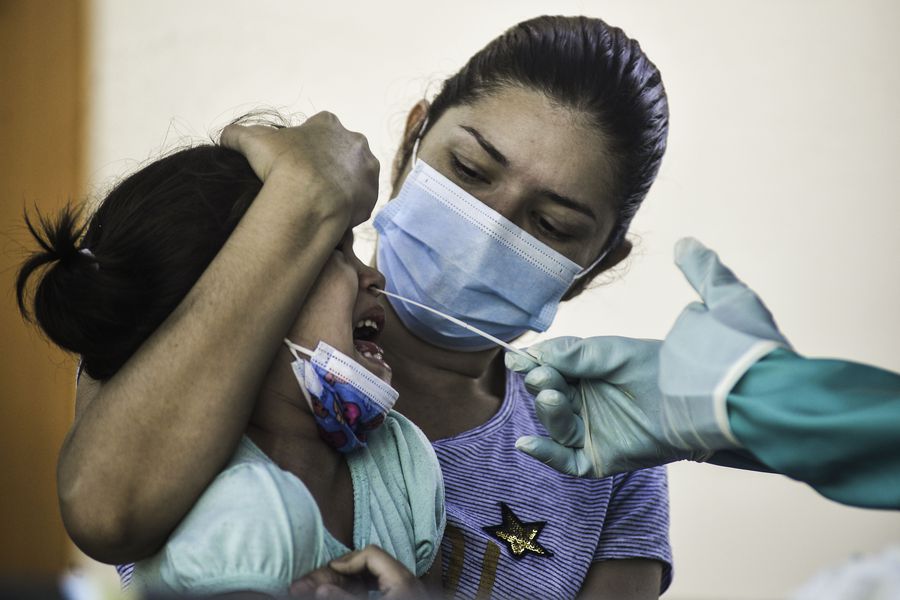According to the World Health Organization (WHO) , until this Saturday 11 countries have reported cases of children infected with an acute and unknown childhood hepatitis first reported a month ago in the United Kingdom .
According to the WHO, there are already at least 169 infected children, of whom 1 died and another 17 needed a liver transplant.
“It is not yet clear whether there has been an increase in hepatitis cases or an increase in awareness of hepatitis cases occurring at the expected rate but not being detected,” the WHO said in a statement.
Until now, the disease has an unknown origin, but there is increasing evidence that the adenovirus 41 is responsible . “While adenovirus is a possible hypothesis, investigations are ongoing to determine the causative agent, ” the WHO added.
According to analyzes carried out by the Alabama Public Health System , one of the states where cases were reported in the US, a possible association of the cases reported in that state with adenovirus 41 was found.
For this reason, the US Centers for Disease Control and Prevention (CDC) mandated a Health Alert Network (HAN) , which is the CDC’s primary method of sharing clear information about urgent public health incidents with consumers. public information officers.
The CDC asked doctors to look for an adenovirus infection if a patient has symptoms similar to those found in the Alabama cases.
They describe that adenovirus type 41 typically presents as diarrhea, vomiting, and fever, often accompanied by respiratory symptoms. Although there have been case reports of hepatitis in immunocompromised children with adenovirus infection, adenovirus type 41 is not known to be a cause of hepatitis in otherwise healthy children.
The clinical picture “among identified cases is acute hepatitis (inflammation of the liver) with markedly elevated liver enzymes,” the WHO said in the statement. Many cases reported gastrointestinal symptoms such as abdominal pain, diarrhea, and vomiting “which preceded presentation with severe acute hepatitis,” as well as elevated levels of liver enzymes or alanine aminotransaminase, and jaundice.
Most of the reported cases did not have a fever , the WHO said, and the common viruses that cause acute viral hepatitis, such as hepatitis A, B, C, D and E viruses, have not been detected in any of these cases. .
inflamed liver
Hepatitis is inflammation of the liver, a vital organ that processes nutrients, filters blood, and helps fight infection. When the liver is inflamed or damaged, its function can be affected.
Hepatitis is usually caused by a virus. Adenoviruses are a common type of virus that are spread from person to person and can cause a range of mild to more severe illnesses. But these viruses are rarely reported as a cause of severe hepatitis in healthy people.
The WHO said research into the cause should focus on factors such as “increased susceptibility among young children after a lower level of adenovirus circulation during the Covid-19 pandemic , the possible emergence of a new adenovirus, as well as a coninfection of Sars-CoV -2”.
Most of the cases, 114, were reported in the United Kingdom, where the first death was also recorded. Another 13 cases were reported in Spain, 12 in Israel, nine in the United States, and smaller numbers of confirmed cases in Denmark, Ireland, the Netherlands, Italy, Norway, France, Romania and Belgium, according to the WHO.
For this reason, last Thursday, Christian García, Head of Epidemiology of the Ministry of Health, pointed out that the health authority “has accepted the declaration of the World Health Organization, activating the protocols corresponding to this type of situation.”
“We are actively monitoring this outbreak, more than 10 days ago, when this alert was activated. As is usually done in these cases, the Ministry activates the notice of attention to the entire health care network, monitoring cases and looking for patterns that may indicate the presence of this disease, “said García.
The health authority explained that the Ministry is monitoring hospitalizations through the Department of Statistics and Health Information of the Ministry. “Unusual patterns have not been identified so far, indicating that this disease is not yet present in our country, at least so far,” he noted.
“Naturally we will continue with this monitoring process as long as it is necessary, although it should be noted that the Epidemiology Department constantly maintains various surveillance processes for this type of situation,” added García.

